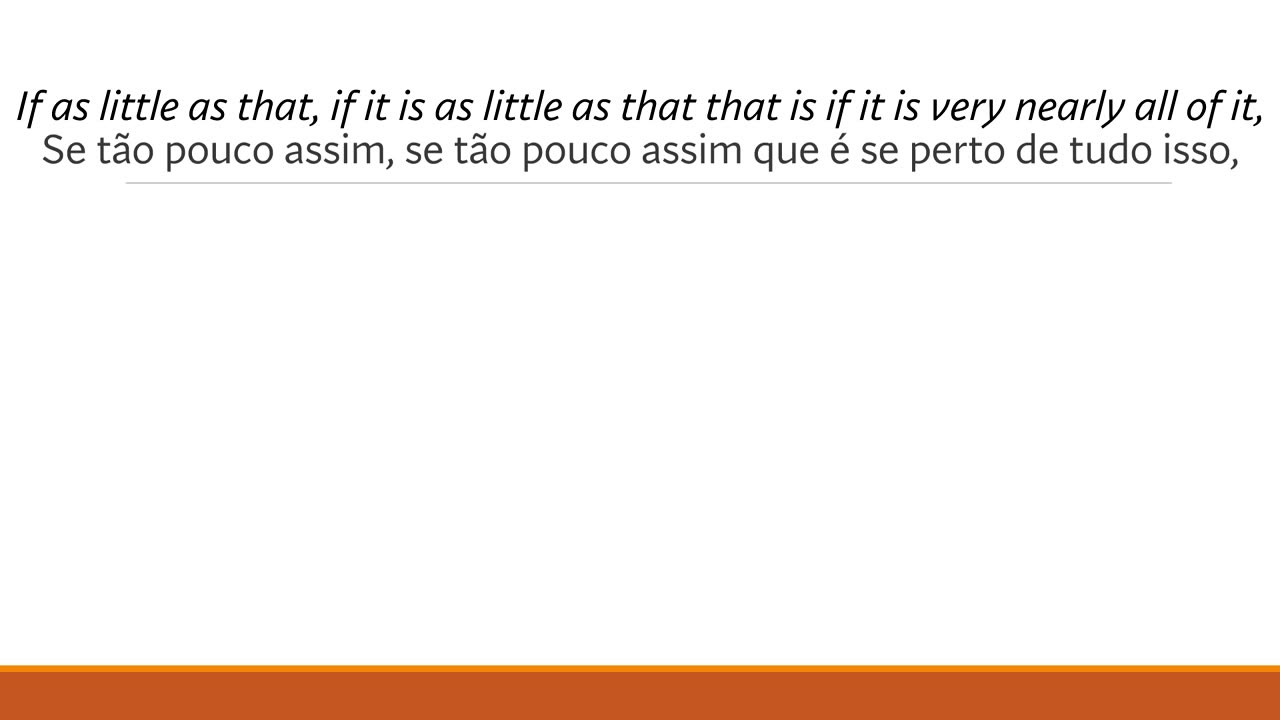Premium Only Content

Recitation NEW (NOVO) by Gertrude Stein (Pittsburgh, USA,1874 - Paris, France, 1946)
A little about the author:
Biography
Gertrude was the youngest of five children of an upper-middle-class Jewish couple, Daniel and Amelia Stein. Her father was a wealthy businessman with real estate holdings. English and German were spoken at home.
At the age of three, she and her family moved to Vienna, and then Paris. Accompanied by rulers and tutors, the Steins strove to imbue their children with the cultured sensibilities of European history and life. After a year abroad, they returned to the United States in 1879, settling in Oakland, California, where his father became director of San Francisco's streetcar line, the Market Street Railway, at a time when the public transport was a private initiative.[3]
She had an appreciable circle of friends, including Pablo Picasso, Matisse, Georges Braque, Derain, Juan Gris, Apollinaire, Francis Picabia, Ezra Pound, Ernest Hemingway and James Joyce.
Mrs. Stein was really brilliant and wrote "Autobiography of Alice B. Toklas", a fundamental book of the avant-garde of the 1910s, 20s and 30s. Paris and detonate new paths for art. Picasso came from Catalonia, Joyce from Ireland, she herself came from America, Nijinski was Russian, there were several French people, like Cocteau, Apollinaire, and Matisse. It is good to remember that, despite the name, the book was written by Miss Stein, with Alice B. Toklas, her companion for twenty-five years, as its spokesperson. Composing an interesting panel of the first three decades of this century:
"Gertrude Stein and her brother often visited the Matisses who constantly returned the visits. From time to time Madame Matisse invited them to lunch, which happened mainly when she received a hare as a gift. Stewed hare made by Madame Matisse in the Perpignan style was something out of the ordinary. There was also top wine, a little heavy but excellent".
During that time Miss Stein and her companion Alice lived at 27 rue de Fleurus. This address would become legendary and an important meeting place for these "geniuses".
Gertrude Stein would be the first to hang paintings by Juan Gris, Matisse and Picasso on her wall. She would later break up with many of them, including Picasso, for whom she retained great affection. Before that, however, she would pose ninety-three times for the Malaga artist to consider her portrait finished: "But you don't look like me at all, Pablo", she said. "But it certainly will, Gertrude, certainly..." replied the painter. The split between the two would only take place in 1927, on the occasion of the death of Juan Gris. Gertrude accused Picasso of not having appreciated Gris enough, he retorted and the two had a beautiful and historic exchange.
Miss Stein loved to tease. The word genius even exercised considerable influence in her life. After all, she was a writer with a rather peculiar and ingenious style, the inventor of automatic writing. So the intellectuals of her time asked if she was really a genius or just an imposter. She gave the change:
"Being a genius takes a terrible amount of time, going from one place to another without doing anything", or else: "A genius is a genius, even when he does nothing".
With the First World War, Miss Stein and Alice lived their adventure enlisting in the F.A.F.F, a protection fund for Americans who then lived in Europe, giving respite to their artistic and literary clashes, the adventure is narrated in the Autobiography. After the war, life returned to normal, but everything was already transformed forever, including and especially Paris. Not so much the façade and architecture of the city, but the people and the rhythm of life.
She is buried in the Père Lachaise Cemetery in Paris, next to Alice B. Toklas
the aesthetic
According to the author herself, her main references are Cézanne and Flaubert, however, her texts are full of intentional repetitions, as in a kind of "mental stutter", generating a meaninglessness very close to Dadaist works. It is possible to extract some meaning from her poems, according to a gestalt, however, they seem much more like sound experiments. The effect is sometimes close to the effect of reading a Surrealist poem, although the compositional technique is completely different, recalling at times the best-known poetry of E. E. Cummings. Her poems are often extensive, although they never yield to logic, exploring, in addition to the repetition of words, the use of monosyllabic words, resembling prose poems.
(Source: https://pt.wikipedia.org/wiki/Gertrude_Stein)
......
Um pouco sobre a autora:
Biografia
Gertrude era a mais nova de cinco filhos de um casal judeu de classe média alta, Daniel e Amelia Stein. Seu pai era um empresário rico com propriedades imobiliárias. Inglês e alemão eram falados em casa.
Aos três anos de idade, ela e sua família mudaram-se para Viena, e depois Paris. Acompanhados por governantes e tutores, os Steins esforçaram-se para imbuir seus filhos com as sensibilidades cultas da história e da vida europeias. Após um ano de permanência no exterior, retornaram para os Estados Unidos em 1879, estabelecendo-se em Oakland, Califórnia, onde seu pai tornou-se diretor da linha de bondes de São Francisco, a Market Street Railway, em uma época em que o transporte público era uma iniciativa privada.[3]
Tinha um apreciável círculo de amigos, como Pablo Picasso, Matisse, Georges Braque, Derain, Juan Gris, Apollinaire, Francis Picabia, Ezra Pound, Ernest Hemingway e James Joyce.
Mrs. Stein era realmente genial e escreveu "Autobiografia de Alice B. Toklas", livro fundamental da vanguarda dos anos 1910, 20 e 30. Com estilo muito próprio, a narrativa conta como jovens artistas e escritores vindos das mais diversas partes do mundo se encontram em Paris e detonam novos caminhos para a arte. Picasso vinha da Catalunha, Joyce da Irlanda, ela própria vinha da América, Nijinski era russo, havia vários franceses, como Cocteau, Apollinaire, e Matisse. É bom lembrar que, apesar do nome, o livro foi escrito por Miss Stein, tendo como porta-voz Alice B. Toklas, sua companheira durante vinte e cinco anos. Compondo um interessante painel das três primeiras décadas deste século:
"Gertrude Stein e o irmão visitavam frequentemente os Matisse que constantemente retribuíam as visitas. De vez em quando Madame Matisse convidava-os para almoçar, o que acontecia principalmente quando recebia alguma lebre de presente. Lebre estufada feita por Madame Matisse à moda de Perpignan era algo fora do comum. Tinha também vinho de primeira, um pouco pesado, mas excelente".
Durante esse tempo, Miss Stein e sua companheira Alice viveram no número 27, rue de Fleurus. Este endereço se tornaria lendário e um importante ponto de encontro desses "gênios".
Gertrude Stein seria a primeira a pendurar em sua parede pinturas de Juan Gris, Matisse e Picasso. Mais tarde romperia com muitos deles, inclusive com Picasso, por quem manteve grande afeição. Antes porém, posaria noventa e três vezes para que o artista malaguenho desse por finalizado o seu retrato: "Mas em nada se parece comigo, Pablo", disse ela. "Mas certamente vai parecer, Gertrude, certamente...", respondeu o pintor. O rompimento dos dois se daria apenas em 1927, por ocasião da morte de Juan Gris. Gertrude acusou Picasso de não ter estimado Gris o bastante, ele retrucou e os dois tiveram um belo e histórico bate-boca.
Miss Stein adorava fazer provocações. A palavra génio exercia mesmo uma influência considerável em sua vida. Afinal, era uma escritora de estilo bastante peculiar e engenhoso, a inventora da escrita automática. Assim os intelectuais de seu tempo perguntavam se ela era mesmo gênio ou não passava de uma impostora. Ela dava o troco:
"Ser gênio exige um tempo medonho, indo de um lugar a outro sem nada fazer", ou então: "um gênio é um gênio, mesmo quando nada faz".
Com a Primeira Guerra Mundial, Miss Stein e Alice viveram sua aventura alistando-se no F.A.F.F, um Fundo de proteção aos americanos que então viviam na Europa, dando folga a seus embates artísticos e literários, a aventura é narrada na Autobiografia. Após a guerra, a vida voltou ao normal, mas tudo já estava transformado para sempre, inclusive e principalmente Paris. Não tanto a fachada e a arquitetura da cidade, mas as pessoas e o ritmo da vida.
Encontra-se enterrada no Cemitério Père Lachaise, em Paris, ao lado de Alice B. Toklas
A estética
Segundo a própria autora, suas principais referências são Cézanne e Flaubert, sendo, no entanto, seus textos cheios de repetições intencionais, como em uma espécie de "gagueira mental", geradores de um sem sentido muito próximo dos trabalhos dadaístas. É possível extrair algum sentido de seus poemas, de acordo com uma gestalt, porém, parecem eles muito mais a experimentos sonoros. O efeito, às vezes, é próximo do efeito da leitura de um poema surrealista, embora a técnica de composição seja completamente diferente, lembrando, por vezes, a poesia mais conhecida de E. E. Cummings. Seus poemas são, muitas vezes extensos, embora nunca cedam à lógica, explorando, além das repetições de vocábulos, o uso de palavras monossilábicas, assemelhando-se a poemas em prosa.
-
 2:03:42
2:03:42
Inverted World Live
10 hours agoBigfoot Corpse Coming to the NY State Fair | Ep. 94
104K24 -
 6:16:23
6:16:23
SpartakusLIVE
11 hours ago$1,000 Pistol Challenge || #1 ENTERTAINER of The EONS Eradicates BOREDOM
80.3K2 -
 2:33:37
2:33:37
TimcastIRL
9 hours agoTrump Orders Review of Smithsonian For Being Woke & Out of Control | Timcast IRL
182K72 -
 3:09:10
3:09:10
Barry Cunningham
12 hours agoPRESIDENT TRUMP HAS TAKEN THE MONSTER AWAY FROM THE LEFT! HORROR STORIES WON'T WORK ANYMORE!
81.6K80 -
 1:29:55
1:29:55
WickedVirtue
6 hours agoLate Night Fortnite w/ Friends
50.9K -
 3:34:06
3:34:06
This is the Ray Gaming
7 hours ago $1.07 earnedCould you be? Would you be? Won't you be my RAYBOR? | Rumble Premium Creator
30.9K -
 1:46:52
1:46:52
JahBlessGames
8 hours ago🎉Come een' and come tru' - VIBES | MUSIC | GAMES
52.3K2 -
 38:47
38:47
MattMorseTV
10 hours ago $14.49 earned🔴Tulsi just CLEANED HOUSE.🔴
68.2K121 -
 6:24:06
6:24:06
Reolock
11 hours agoWoW Classic Hardcore | WE'RE BACK!!
30.8K1 -
 3:46:13
3:46:13
SynthTrax & DJ Cheezus Livestreams
13 hours agoShell Shock Live - The Scorched Earth Remake/Upgrade - 4pm PST / 7pm EST - RUMBLE GAMING
47.6K